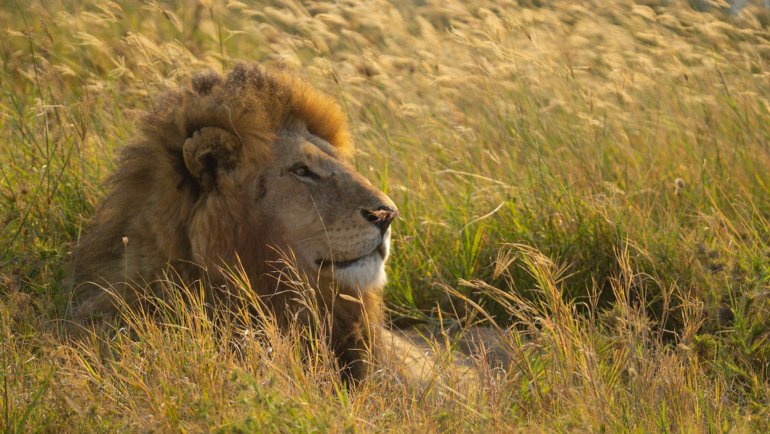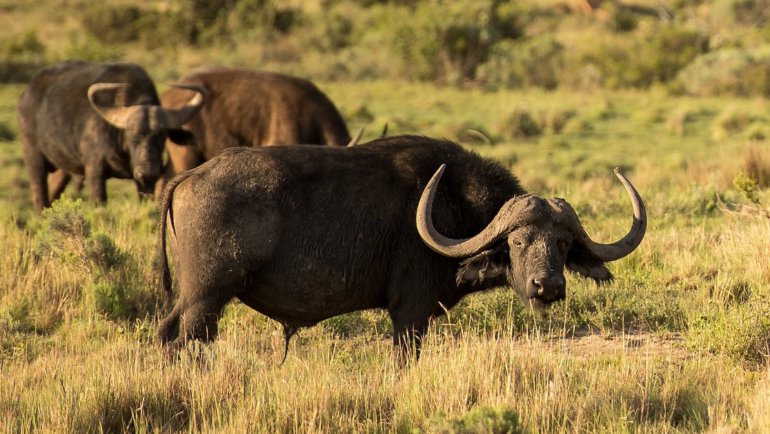If you have trees in your yard, you may wonder whether raccoons can climb or even live there.
In this article, you will find the possibility of a raccoon nesting and living in a tree and also learn how to identify its nest. So keep reading to learn everything you want about these creatures!
Do Raccoons Climb Trees?
Yes, raccoons are excellent climbers known for their ability to climb trees. They have sharp claws that can grip the bark of trees, allowing them to climb up and down easily.
Why Do Raccoons Climb Trees At Night?
Raccoons are known to be skilled climbers, and they often climb trees at night for various reasons:
Safety: Climbing trees is one of the ways that raccoons protect themselves from predators. They can avoid ground-based predators by climbing high up into the branches and finding a safe place to sleep.
Foraging: Raccoons are opportunistic omnivores and will eat a variety of foods. Climbing trees at night allows them to reach fruits, nuts, and other food sources that may be out of reach on the ground.
Navigation: Climbing trees can also help raccoons navigate their environment. By climbing up high, they can get a better view of their surroundings and locate food, shelter, and other resources.
Social behavior: Raccoons often climb trees to communicate with other raccoons. They may use chirps, chatters, and other vocalizations to communicate and establish dominance within their group.
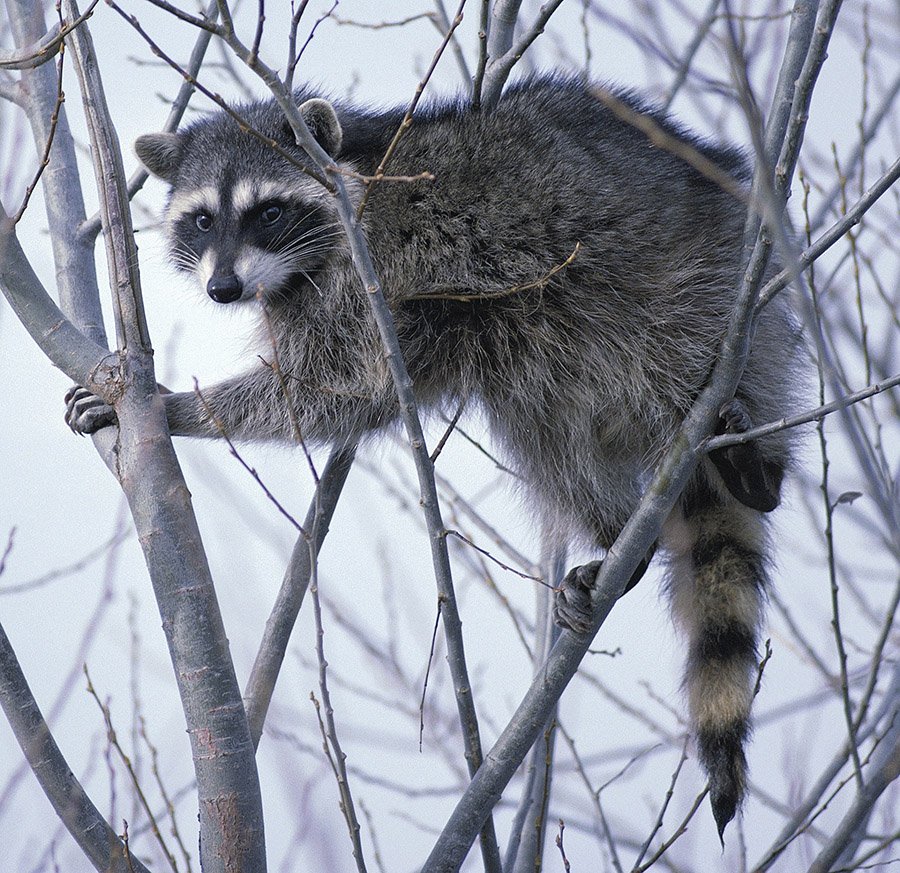
Why Do Raccoons Climb Trees During The Day?
Raccoons are nocturnal animals, which means they are primarily active during the night. However, it is common to see them climbing trees during the day. There could be several reasons for this behavior:
Resting: Raccoons may climb trees during the day to relax and conserve energy. Trees provide a safe and secure place for them to sleep away from predators.
Foraging: Raccoons are opportunistic feeders and may climb trees during the day to search for food, such as fruits, nuts, and insects.
Escape: Raccoons may climb trees to escape danger or threats. Trees provide a safe place for them to retreat and avoid predators or other animals that may be threatening them.
Exploration: Raccoons are curious animals and may climb trees to explore their surroundings or to find new food sources.
Overall, raccoons are adaptable animals and can adjust their behavior to suit their needs. Climbing trees during the day is just one of the many ways they have evolved to survive in their environment.
Also read: Do Raccoons Hibernate? How Do They Survive Winter?
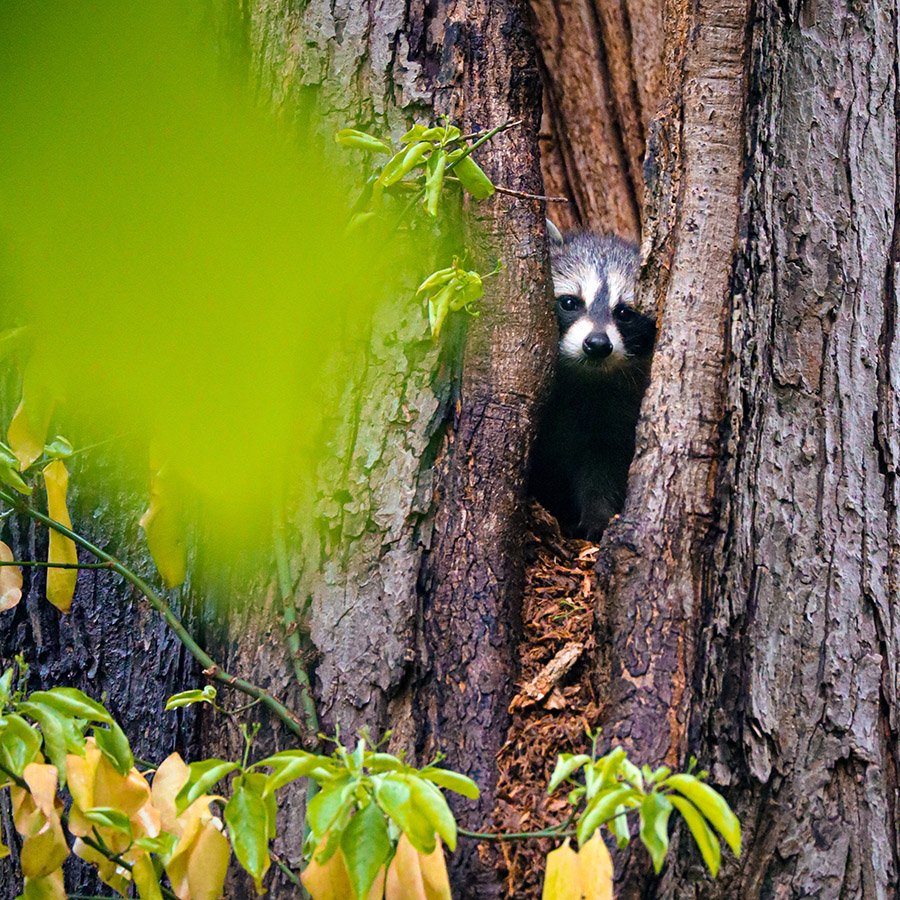
Do Raccoons Live In Trees?
Yes, raccoons are skilled climbers and are known to live in trees. They have sharp claws and flexible paws that allow them to climb trees easily, and they often make their dens in tree hollows or other tree cavities.
Raccoons are also adaptable animals and can live in various habitats, including forests, urban areas, and suburban areas. In urban and suburban areas, they may climb trees to access bird feeders or escape predators such as dogs.
Do Raccoons Nest In Trees?
Yes, raccoons are known to nest in trees. They are adaptable animals and can use a variety of habitats for shelter, including trees, which provide a safe and secure place to rest and raise their offspring.
Raccoons typically build their nests, also known as dens, in hollow trees or tree cavities, but they may also construct nests out of branches and leaves. They also use abandoned bird nests or squirrel dens as their own.
When choosing a tree to nest in, raccoons prefer tall trees with thick foliage and a relatively large diameter. They may also choose a tree close to a food or water source.
Also read: Where do Raccoons Sleep? All About Raccoons’ Sleeping Habits
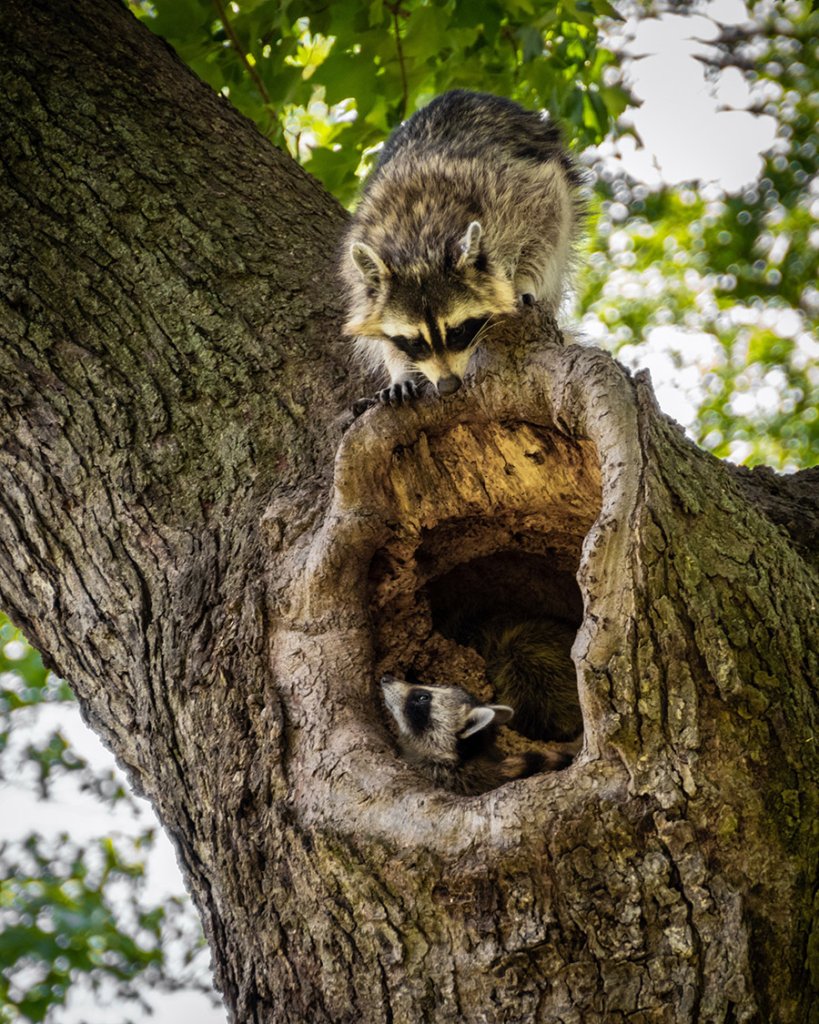
What Does A Raccoon Nest Look Like?
Raccoons create nests in various locations, depending on their habitat. However, they typically prefer to build their nests in trees, dens, or hollows.
A raccoon nest in a tree is usually made from twigs, leaves, and other natural materials. It can be up to 30 feet above the ground and often looks like a large ball-shaped structure. Raccoons will typically build their nests in the fork of a tree branch or a cavity within the tree trunk.
In contrast, raccoons living in dens or burrows typically create a nest out of leaves, grass, and other soft materials. The den can be located in various areas, such as under a deck or hollow log. It is often similar in appearance to a bird’s nest but more significant and robust.
In both cases, raccoon nests are typically constructed with materials that provide insulation and protection from the elements. The nests can also be lined with fur or other soft materials to keep the raccoons warm and comfortable.
Final Thoughts
You now understand why raccoons prefer sleeping, climbing, and spending time in trees. It’s primarily because they offer them and their kits all the required protection and shelter.

